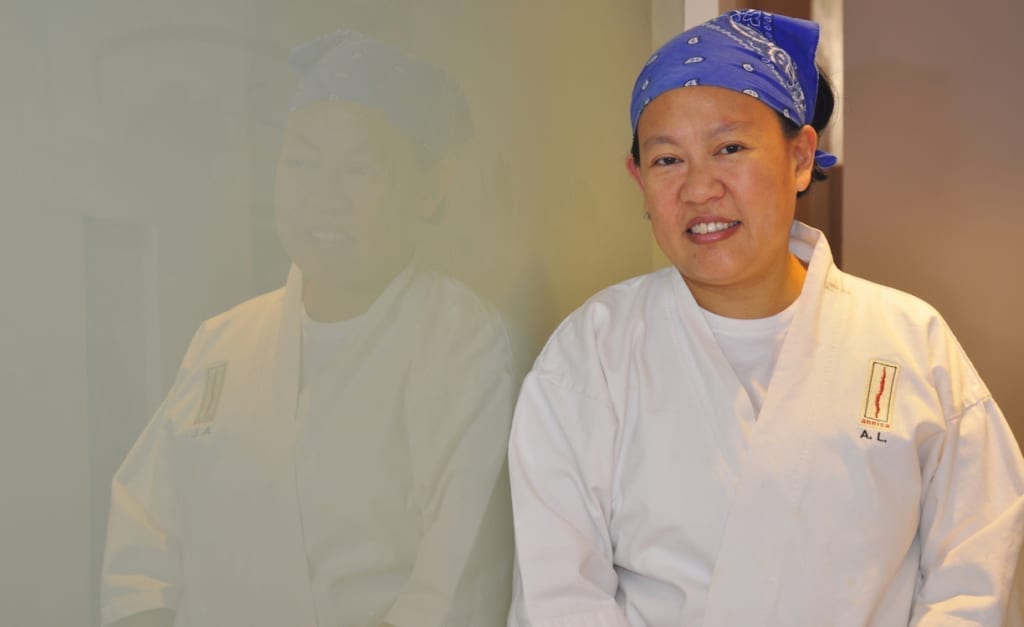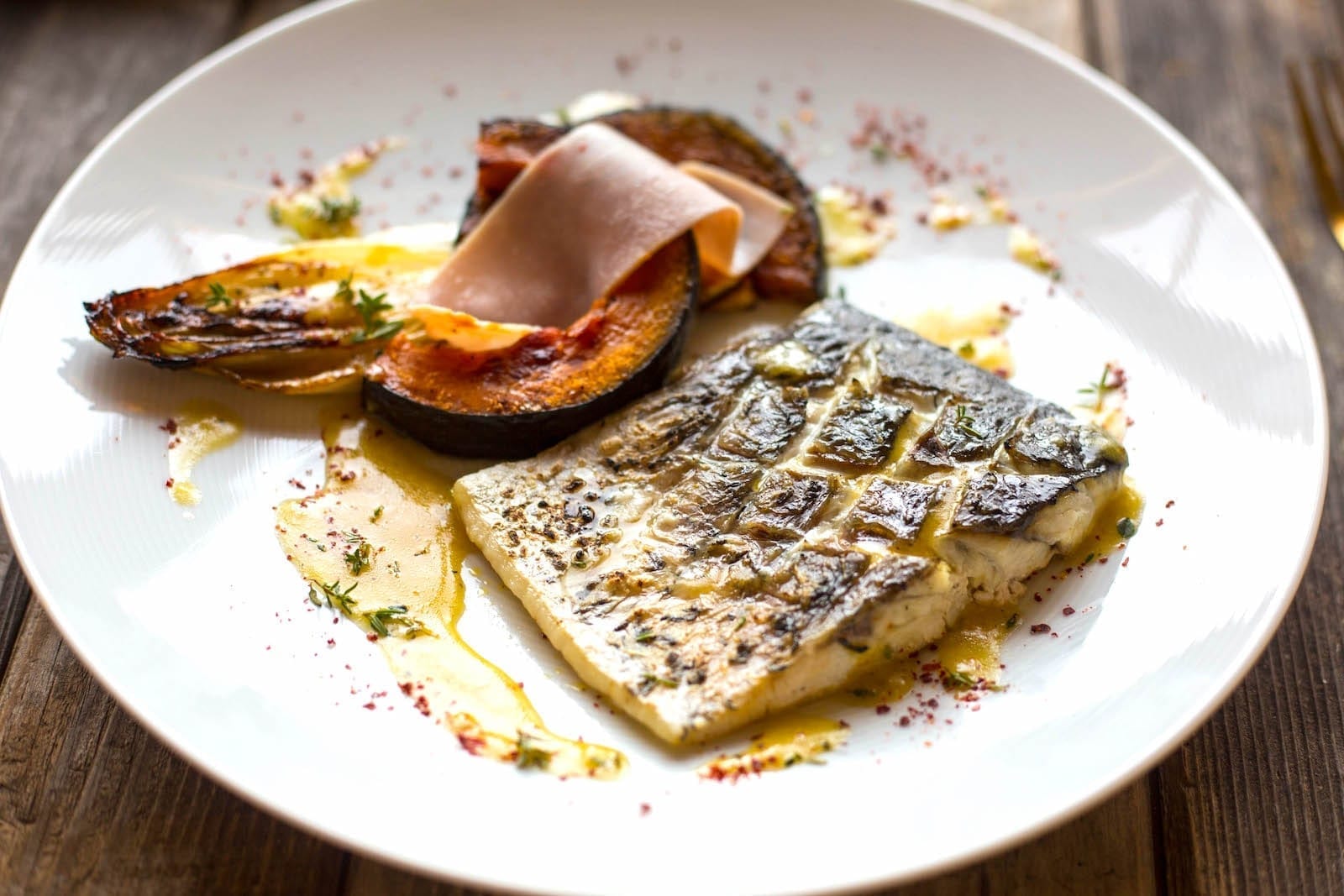Anita Lo on Culture, Cooking and Fighting Childhood Obesity

With her well-loved restaurant Annisa closing at the end of May, chef Anita Lo is embarking on a new and exciting chapter.
With over 30 years in the kitchen—including a stint on Top Chef Masters, Food & Wine’s “Best New Chefs in America” circa 2001, and the chef and owner of one of New York’s most iconic restaurants—the obvious question for Chef Anita Lo is “What’s next?” Read on to find out what the future holds for her, why she’s committed to fighting childhood obesity and how simply having an open mind just may change the world.
You’re participating in some upcoming events for Common Threads, an organization dedicated to fighting childhood obesity. How did you get involved?
I met Art Smith, who started Common Threads, on set in Top Chef Masters and we immediately hit it off. The organization really speaks to me because it has a multicultural thread, which is a part of identity politics that has always been key to who I am.
Starting at the end of April, I’ll be participating in a few of their Cooking for Life Chef Takeover fundraising dinners. The first is in Chicago on April 30th and is in honor of the late Charlie Trotter. I’ll be serving steamed Australis Barramundi with endive, blood orange, and sunchoke. Barramundi fits Trotter’s ethos as back then he was using all different species of fish, many that no one would touch.
More about Cooking for Life Chef Takeover: The pop-up dinner series consists of five events throughout the country. Each event features a group of renowned chefs collaborating to create a themed meal, a silent auction, and a special guest musical performance. All funds raised will benefit Common Threads programs, bringing health and wellness to students, families, and communities through cooking and nutrition education, getting one million children cooking for life by 2020!
Tell us about one of your earliest seafood memories.
Seafood has always been a part of my life. We ate it from the very beginning. I grew up clamming on Cape Cod. Every year for my birthday I asked for a traditional New England clam bake. And living in Michigan when I was growing up, being an Asian family, we regularly ate fish and seafood.
And how did you get interested in food?
I came from a foodie family before the word “foodie” existed. My parents used to travel for food and they would take us with them. Everywhere we went we tried to experience the culture through food. What was best there, we would seek it out. Food has always been a part of my life, one of the best parts of my life.
In college, I was learning to cook for myself out of necessity and studying French. I ended up going to cooking school and the rest is history.
What are your thoughts on the current state of seafood?
Some things are getting better. It’s much easier to get quality seafood. Back in the day, we’d send stuff back to suppliers all the time. Now, very rarely do you have to send anything back.
On the other hand, there are a lot of species that were plentiful when I was starting out that you’re not supposed to buy anymore because of depleted supply. We eat and have eaten what we want to eat from the ocean without consideration as to what it can give us.
Additionally, the oceans are warming. As a result, we’re seeing species in places where they shouldn’t be. I recently in Mexico and we were catching Wahoo. That was previously unheard of. Everything seems to be moving.
Why is sustainability important to you?
As chefs and restaurant owners, we serve a lot of people, and we do have a responsibility because we have buying power on some level. And we all have a responsibility for the future of the planet and to take care of our stocks. We have a growing population and we’re failing to feed all the people that we have now. We need to look at what we’re doing holistically, making sure that the planet is healthy, and that involves growing and harvesting our food properly.
You’ve traveled extensively and are known for bringing elements of diverse cultures into your food: How does this affect your approach to seafood?
My travels, on some level, impact everything I do in the kitchen. Being Asian and having studied in France, I’ve always been hyper-aware of waste. I try to use every part of everything I have. That means using things like fluke liver, which is delicious, not unlike monkfish liver. (I’ve mostly been avoiding monkfish because of the way they’ve been catching it.) Cod sperm, or milt, is also delicious. It’s something that’s being eaten in Japan. If it’s being eaten somewhere, I’ve put it on my menu. It’s not necessarily the focus, maybe a garnish, but I believe in giving people the option to try something different.

Your restaurant, Annisa, is closing in May. What’s next for you?
I really don’t now. I’m 51 years old and I’ve been at this for three decades. I’m going to take a year off and do some traveling, spend some time on Long Island, and help my chef de cuisine open her own restaurant. I’ll also continue doing cookbooks, and I’m hosting a cultural trip to the Yucatan in October.
I’m going to leave it open. I love what I’ve done, but I want I see the rest of life.
What advice would you give to an up-and-coming chef or food entrepreneur who is interested in sustainable seafood?
Read, read, read, read, read. You have to read because things change all the time. Also, it’s not going to be a perfect system, but do your research and know where your food comes from.
What’s the one fish or food myth you’d like to debunk once and for all?
I would love for people to open their minds. I think food preferences are largely cultural and some food fears are just prejudices, unfounded cultural biases. If you can just open your mind and eat more diversely it will be better for the planet, your body—everything. And perhaps if people can open their minds to other people’s food cultures, they can open their minds to other cultures as a whole.
Recipe
Get Chef Anita Lo & Chef Mary Attea’s Fire Roasted Barramundi with Kabocha, Caramelized Endive and Lardo recipe!